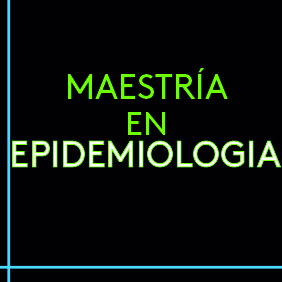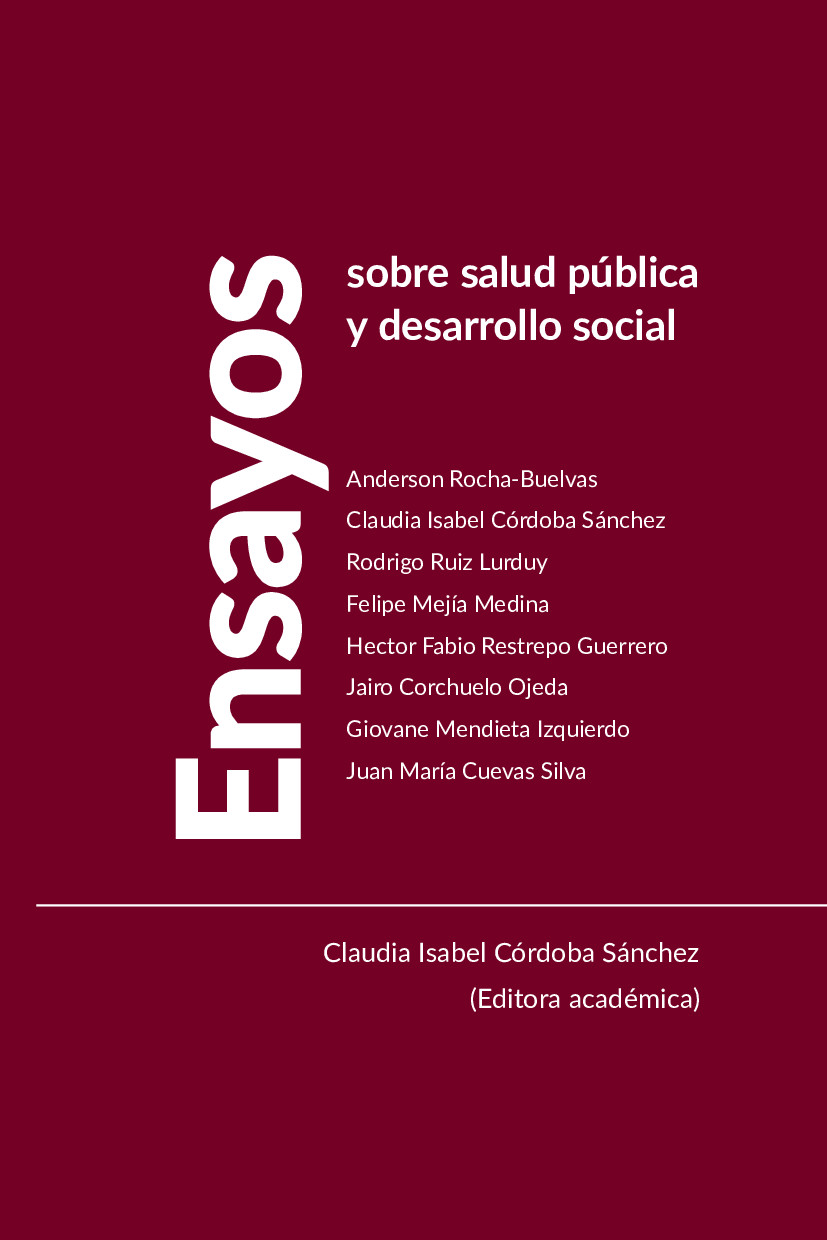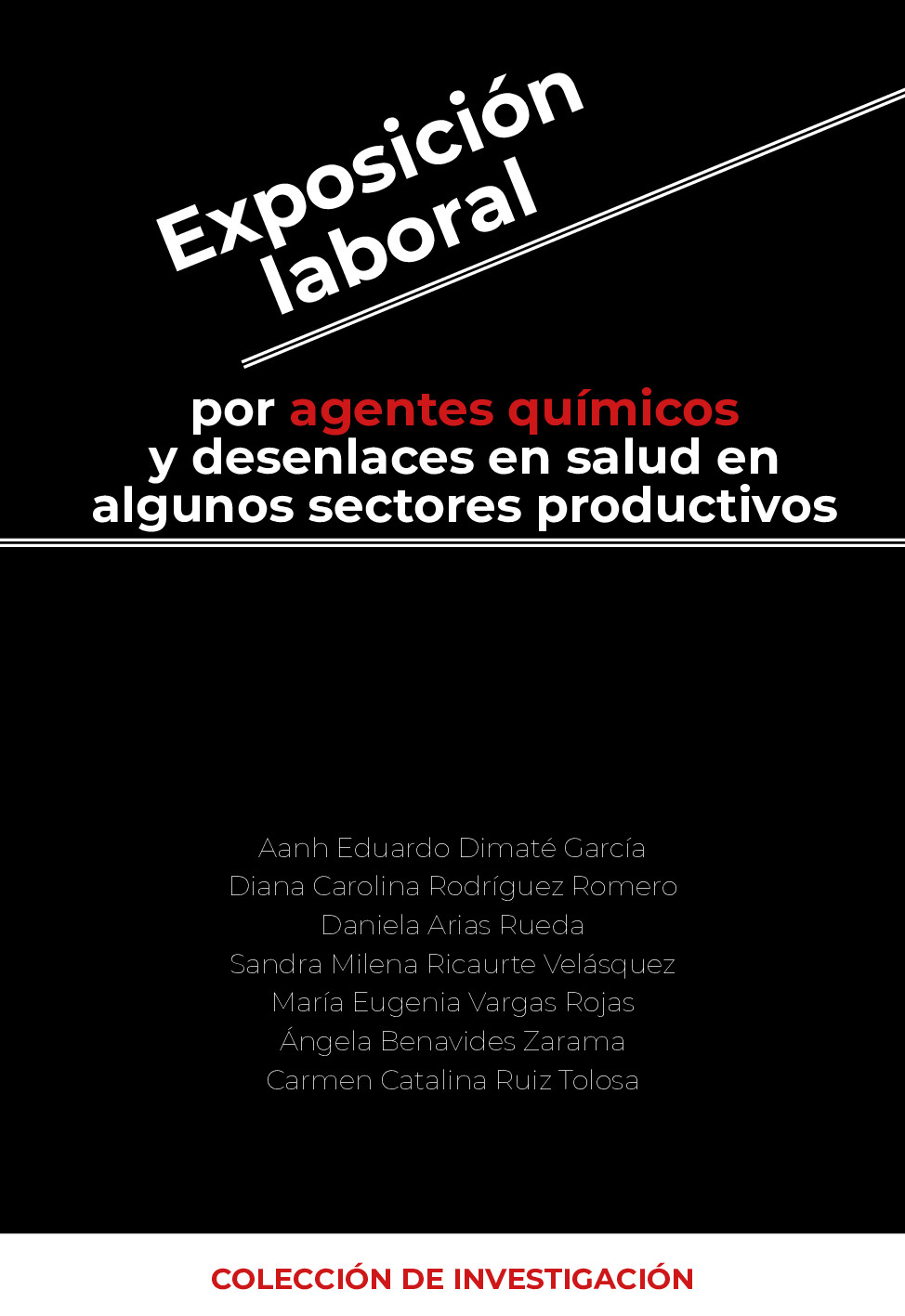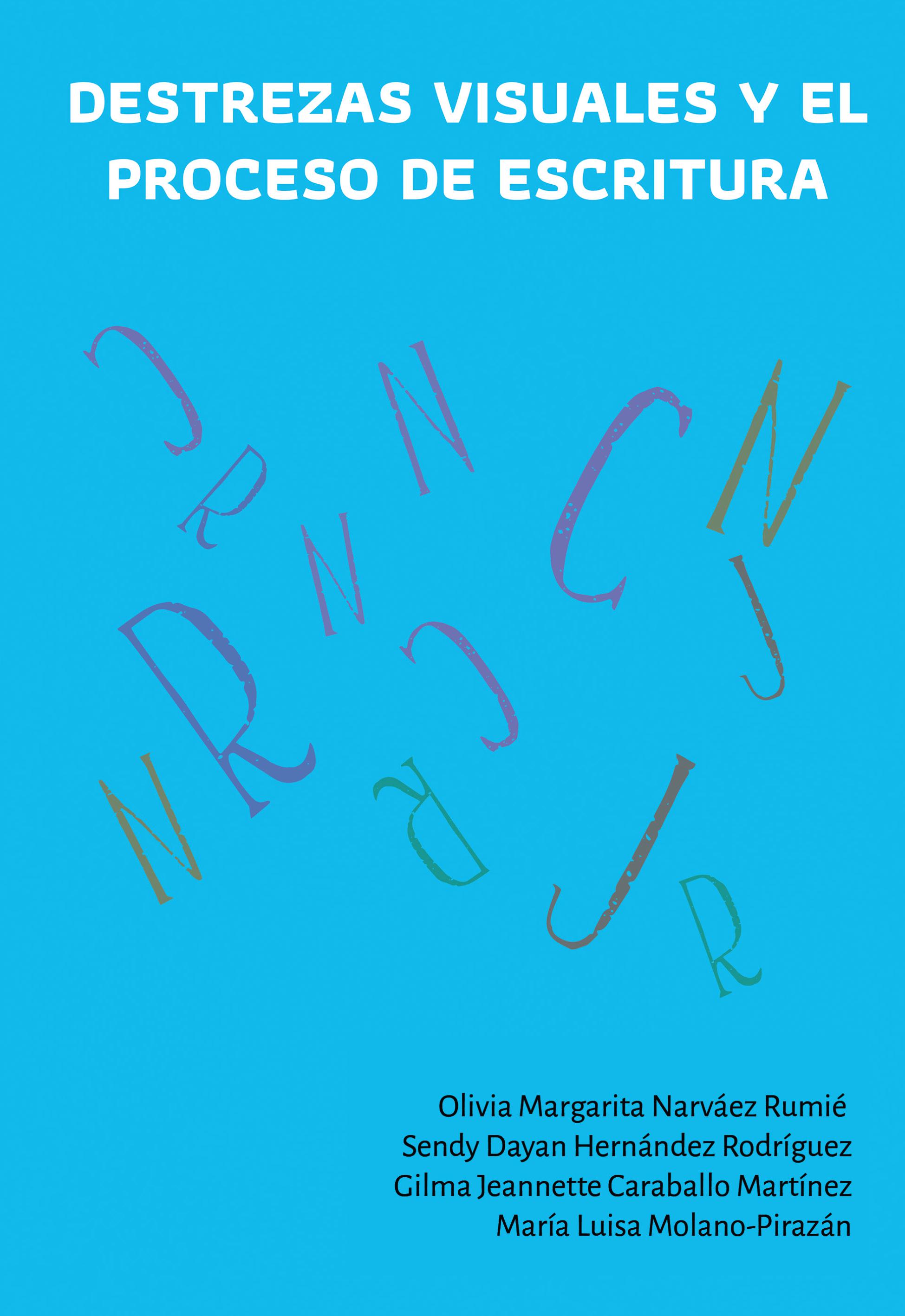Abstract
Introduction: vulnerability is a concept used in different fields and disciplines. The relevance of this concept for health and epidemiology, is the fact that the inclusion of this category allows a better understanding of individual and contextual determinants for the health-disease process .
Objective: the aim's of this article is to review the implementation of the concept of vulnerability and its operationalization in the HIV field.
Methodology: a systematic review was performed. The inclusion criteria were 1) jobs in which the vulnerability to HIV, was analyzed and clearly and specifically operationalized. 2) works which used the vulnerability to HIV as an independent or dependent variable, and 3 ) works which will contibute to original empirical data, discarding theoretical work to appear only in the concept of vulnerability to HIV , the latter were not taken into account systematically for further discussion on the findings of the review. The strategy for search included the following terms : [ "social AND HIV Vulnerability ," " Health Vulnerability AND HIV ," " HIV AND Vulnerable Groups ", " Vulnerability Analysis and HIV ," " HIV and Vulnerability Study "] . [" Vulnerability AND HIV ," " Health Vulnerability AND HIV ," " HIV Vulnerability Analysis AND " " AND HIV Vulnerability Study "] .
Conclusion: the current paradigm attempts to overcome the biological perspective , recognizing that to understand the behavior of the HIV as an epidemy , are fundamental to study the social, political, economic and cultural conditions of the people .
We identified gaps in the literature, such as the lack of unification when operationalize the concept of vulnerability to HIV. Although there are theoretical models of vulnerability to HIV , the unification of this concept is identified, and is required to advance in the investigation.
Licence
Authors should declare no conflicts of interest either for reasons of financing the project which is the result of the article; as well as intellectuals, academics, moral and investigative reasons.
The Journal of Andean Research is home to the ethical rules for publications issued by the COPE: http://publicationethics.org/resources/code-conduct
References
2. Diccionario de la lengua espa-ola - Vigésima segunda edición [Internet]. [citado 5 de septiembre de 2012]. Recuperado a partir de: http://lema.rae.es/drae/?val=vulnerable
3. Etimología. Etimología de Vulnerable [Internet]. 2010. Recuperado a partir de: http://etimologias.dechile.net/?vulnerable
4. Cannon T Blaikie Blaikie P, David I, Wisner B. Vulnerabilidad el entorno social, politico y económico de los desastres. 1.a ed. 1996.
5. Feito L. Vulnerabilidad. Anales [Internet]. 2007;30. Recuperado a partir de: http://www.cfnavarra.es/salud/anales/textos/vol30/sup3/suple2.html
6. Silva TMR da, Alvarenga MRM, Oliveira MA de C. Evaluation of the vulnerability of families assisted in Primary Care in Brazil. Rev Lat Am Enfermagem. octubre de 2012;20(5):935-43.
7. Sousa PKR de, Miranda KCL, Franco AC. Vulnerabilidade: análise do conceito na prática clínica do enfermeiro em ambulatório de HIV/AIDS. Rev Bras Enferm. abril de 2011;64(2):381-4.
8. German D, Latkin CA. Social stability and HIV risk behavior: evaluating the role of accumulated vulnerability. AIDS Behav. enero de 2012;16(1):168-78.
9. Gelberg L, Andersen RM, Leake BD. The Behavioral Model for Vulnerable Populations: application to medical care use and outcomes for homeless people. Health Serv Res. febrero de 2000;34(6):1273-302.
10. Brunello MEF, Chiaravalloti Neto F, Arcêncio RA, Andrade RL de P, Magnabosco GT, Villa TCS. Áreas de vulnerabilidade para co-infecção HIV-aids/TB em Ribeirão Preto, SP. Rev Saúde Pública. junio de 2011;45(3):556-63.
11. Tsasis Peter, Nirupama N. Vulnerability and risk perception in the management of HIV/ AIDS: Public priorities in a global pandemic. Risk Manag Heal Policy. 2008;1:7-14.
12. Curran JW. The epidemiology and prevention of the acquired immunodeficiency syndrome. Ann Intern Med. noviembre de 1985;103(5):657-62.
13. Matuszak DL, Kotval I, Garg R, Patel J, Israel E, Glasser D. Prevalence of risk behaviors and HIV infection in Maryland STD clinics. Md Med J Baltim Md 1985. diciembre de 1989;38(12):1019-26.
14. Scala E, Luzi G, Aiuti F. [The correct use of the condom reduces the risk of HIV infection]. Immunol Clin. diciembre de 1989;8(4):201-13.
15. Kraft P, Rise J, Gronnesby JK. Prediction of sexual behaviour in a group of young Norwegian adults. NIPH Ann. diciembre de 1989;12(2):27-44.
16. Kalichman SC, Catz S, Ramachandran B. Barriers to HIV/AIDS treatment and treatment adherence among African-American adults with disadvantaged education. J Natl Med Assoc. agosto de 1999;91(8):439-46.
17. Cargill VA, Stone VE. HIV/AIDS: a minority health issue. Med Clin North Am. julio de 2005;89(4):895-912.
18. Ministerio de Protección Social. Vulnerabilidad a la infección por VIH. Ministerio de Proteccion Social; 2008.
19. Meyer DEE, Mello DF de, Valadão MM, Ayres JR de CM. «Você aprende. A gente ensina?»: interrogando relações entre educação e saúde desde a perspectiva da vulnerabilidade. Cad Saúde Pública. junio de 2006;22(6):1335-42.
20. Amirkhanian YA. Review of HIV vulnerability and condom use in central and eastern Europe. Sex Health. marzo de 2012;9(1):34-43.
21. Figueiredo R, Ayres JRCM. [Community based intervention and reduction of women's vulnerability to STD/AIDS in Brazil]. Rev Saúde Pública. agosto de 2002;36(4 Suppl):96-107.
22. Mawar N, Saha S, Pandit A, Mahajan U. The third phase of HIV pandemic: social consequences of HIV/AIDS stigma & discrimination & future needs. Indian J Med Res. diciembre de 2005;122(6):471-84.
23. Mueses H, Pinzón M, Tello I, Rincón-Hoyos H, Galindo J. HIV and risk behaviors of persons of low socio-economic status, Popayan-Colombia (2008-2009). Colomb Med. 2013;44(1):7-12.
24. Grangeiro A, Holcman MM, Onaga ET, Alencar HDR de, Placco ALN, Teixeira PR. Prevalência e vulnerabilidade à infecção pelo HIV de moradores de rua em São Paulo, SP. Rev Saúde Pública. agosto de 2012;46(4):674-84.
25. Anjos RHD dos, Silva JA de S, Val LF do, Rincon LA, Nichiata LYI. Diferenças entre adolescentes do sexo feminino e masculino na vulnerabilidade individual ao HIV. Rev Esc Enferm USP. agosto de 2012;46(4):829-37.
26. Rodrigues L, Paiva MS, Oliveira JF de, Nobrega S. Vulnerabilidad de mujeres en unión heterosexual estable a la infección por VIH/SIDA: estudio de representaciones sociales. Rev Esc Enferm USP. 46(2):349-55.
27. Dos Anjos RHD, Silva JA de S, do Val LF, Rincon LA, Nichiata LYI. [Differences between female and male adolescents regarding individual vulnerability to HIV]. Rev Esc Enferm U P. agosto de 2012;46(4):829-37.
28. Riley GA, Baah-Odoom D. Belief in a just world, generalised self-efficacy and stigma may contribute to unsafe sexual intentions via a reduced perception of vulnerability to HIV/AIDS amongst young people in Ghana. AIDS Care. 2012;24(5):642-8. http://dx.doi.org/10.1080/09540121.2011.630348
29. Fernández F, Stival M. Políticas, sentidos y vulnerabilidad sociocultural asociados al VIH-Sida en las poblaciones qom de Rosario, Argentina. Desacatos. 2011;35:29-40.
30. Galindo J, Tello I, Mueses H, Duque JE, Shor-Posner G, Moreno G. VIH y vulnerabilidad: una comparación de tres grupos en Cali, Colombia. Rev Fac Nac Salud Pública. 2011;29:25-33.
31. Brooks RA, Lee S-J, Stover GN, Barkley TW. HIV testing, perceived vulnerability and correlates of HIV sexual risk behaviours of Latino and African American young male gang members. Int J STD AIDS. 1 de enero de 2011;22(1):19-24.
32. Underwood C, Skinner J, Osman N, Schwandt H. Structural determinants of adolescent girls' vulnerability to HIV: Views from community members in Botswana, Malawi, and Mozambique. Soc Sci Med. Julio de 2011;73(2):343-50. http://dx.doi.org/10.1016/j.socscimed.2011.05.044
33. Cabieses B, Ferrer L, Tunstall H, Norr K. The relationship between knowledge of HIV, self-perceived vulnerability and sexual risk behavior among community clinic workers in Chile. Rev Salud Publica. 12(5):777-89. http://dx.doi.org/10.1590/S0124-00642010000500008
34. López Z, Ochoa S, Alcaraz G, Leyva R, Rodríguez M. Vulnerabilidad a infecciones de transmisión sexual y SIDA en mujeres en situación de desplazamiento forzado. Medellín, Colombia. Invest Educ Enferm. 2010;28(1):11-22.
35. Greener R, Sarkar S. Risk and vulnerability: do socioeconomic factors influence the risk of acquiring HIV in Asia? AIDS Lond Engl. septiembre de 2010;24 Suppl 3:S3-11.
36. Mu-oz J, Adedimeji A, Alawode O. «They bring AIDS to us and say we give it to them»: Socio-structural context of female sex workers' vulnerability to HIV infection in Ibadan, Nigeria. SAHARA J J Soc Asp HIVAIDS Res Alliance SAHARA Hum Sci Res Counc. agosto de 2010;7(2):52-61.
37. Bogale GW, Boer H, Seydel ER. Condom use among low-literate, rural females in Ethiopia: the role of vulnerability to HIV infection, condom attitude, and self-efficacy. AIDS Care. julio de 2010;22(7):851-7.
38. Teague SM. Perceptions of vulnerability to HIV/ AIDS: a comparison of two college cohorts, 1990 and 2005. AIDS Educ Prev Off Publ Int Soc AIDS Educ. diciembre de 2009;21(6):526-37.
39. Urzúa R, Zu-iga P. Vulnerabilidad al VIH en mujeres en riesgo social. Rev Saúde Pública [Internet]. 2008;1. Recuperado a partir de: http://www.scielosp.org/pdf/rsp/2008nahead/6903.pdf
40. Hernández-Rosete D, Maya García O, Bernal E, Casta-eda X, Lemp G. Migración y rural-ización del SIDA: relatos de vulnerabilidad en comunidades indígenas de México. Rev Saúde Pública. febrero de 2008;42(1):131-8.
41. Glenn BL, Wilson KP. African American adolescent perceptions of vulnerability and resilience to HIV. J Transcult Nurs Off J Tran-scult Nurs Soc Transcult Nurs Soc. julio de 2008;19(3):259-65.
42. Oliveira JF de, Paiva MS. Vulnerabilidade de mulheres usuárias de drogas ao HIV/AIDS em uma perspectiva de gênero. Esc Anna Nery. diciembre de 2007;11(4):625-31.
43. Santos A de O, Paiva V. [Vulnerability to HIV: tourism and the use of alcohol and other drugs]. Rev Saúde Pública. diciembre de 2007;41 Sup-pl 2:80-6.
44. Omorodion F, Gbadebo K, Ishak P. HIV vulnerability and sexual risk among African youth in Windsor, Canada. Cult Health Sex. agosto de 2007;9(4):429-37.
45. Salazar X, Cáceres C, Rosasco A, Kegeles S, Maiorana A, Gárate M, et al. Vulnerability and sexual risks: Vagos and vaguitas in a low income town in Perú. Cult Health Sex. agosto de 2005;7(4):375-87.
46. Gómez JJ. Vulnerabilidad y medio ambiente [Internet]. CEPAL; 2001. Recuperado a partir de: http://www.cepal.org/publicaciones/xml/3/8283/jjgomez.pdf
47. Coburn AW. Vulnerabilidad y evaluación del riesgo [Internet]. Naciones Unidas; 1991. Recuperado a partir de: http://www.crid.or.cr/crid/IDRC/HerramientasGLR/Pdf+mhts/doc63/ Vulnerabilidad_y_evaluacion_del_Riesgo.pdf
48. United Nations Environment Programme. La vulnerabilidad humana frente al cambio ambiental [Internet]. Recuperado a partir de: http://www.grida.no/geo/geo3/spanish/pdfs/chap-ter3_vulnerability.pdf
49. Helge Jan. Vulnerabilidad: ¿un principio fútil o útil en la ética de la asistencia sanitaria? Rev RedbioéticaUNESCO. 1:12.
50. Solbakk JH. Vulnerabilidad: ¿un principio fútil o útil en la ética de la asistencia sanitaria? Rev Redbioética UNESCO. 2011;3:89-101.
51. Lampis A. ¿Qué ha pasado con la Vulnerabilidad Social en Colombia? Sociedad y Economía. 2010;19:229-61.
52. Avalos D PE. Medición de la vulnerabilidad social [Internet]. Pontificia Universidad Católica de Chile; 2007. Recuperado a partir de: http://www.infocap.cl/web/pdf/Informe_Final_Medicion_Vulnerabilidad_Social.pdf
53. Busso Gustavo. Vulnerabilidad social: nociones e implicaciones de politica para lationamerica a inicios del siglo XXI. CEPAL; 2001.
54. Kaztman R. Marco conceptual sobre activos vulnerabilidad y estructura de oportunidades. CEPAL; 1999.
55. Tsasis P. Vulnerability and risk perception in the management of HIV/AIDS: Public priorities in a global pandemic. Risk Manag Healthc Policy. noviembre de 2008;7.
56. Gelberg L, Andersen RM, Leake BD. The Behavioral Model for Vulnerable Populations: application to medical care use and outcomes for homeless people. Health Serv Res. 2000;34(6):1273-302.
57. Flaskerud JH, Winslow BJ. Conceptualizing vulnerable populations health-related research. Nurs Res. abril de 1998;47(2):69-78.
58. Mu-oz Sánchez AI, Bertolozzi MR. Pode o conceito de vulnerabilidade apoiar a construção do conhecimento em Saúde Coletiva? Ciênc Saúde Coletiva. abril de 2007;12(2):319-24.
59. Arcos E, Mu-oz LA, Sánchez X, Vollrath A, Latorre C, Bonatti C, et al. Vulnerabilidad social en mujeres embarazadas de una comuna de la Región Metropolitana. Rev. Médica Chile. junio de 2011;139(6):739-47.
60. Tarantola D, Mann J. AIDS and human rights. AIDS Soc. agosto de 1995;6(4):1, 5.
61. Susser M, Susser E. Choosing a future for epidemiology: II. From black box to Chinese boxes and eco-epidemiology. Am J Public Health. mayo de 1996;86(5):674-7.

 PDF (Español (España))
PDF (Español (España))
 FLIP
FLIP




















